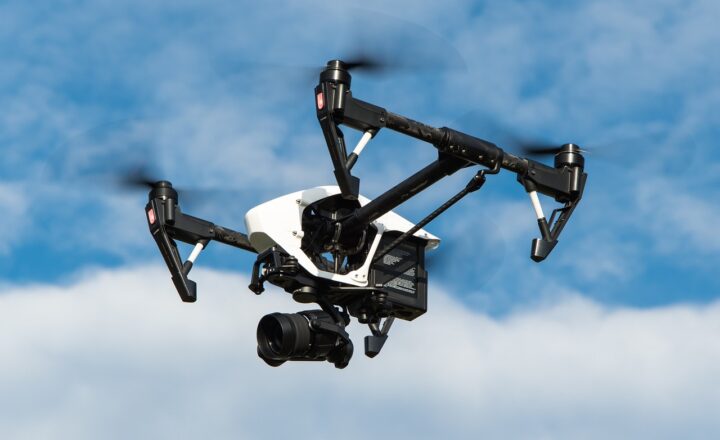How Bioengineering is Enhancing the Capabilities of Modern Soldiers
November 16, 2024

In recent years, the landscape of warfare has transformed significantly, with technology playing a critical role in shaping how conflicts are conducted. Among the most exciting advancements is bioengineering, which has begun to revolutionize the capabilities of modern soldiers. This article explores the various facets of bioengineering—from genetic modifications to wearable technology—that are enhancing soldier performance and wellbeing on the battlefield.
1. Understanding Bioengineering in a Military Context
Bioengineering, or biological engineering, is the application of principles from engineering, biology, and medicine to develop technologies and innovations that can improve lives and productivity. Within the military context, bioengineering is used to enhance the physical and psychological capabilities of soldiers, thereby maximizing their effectiveness in different combat scenarios. From developing biologically integrated systems to innovative prosthetic limbs, bioengineering represents a frontier in military enhancement.
Some applications include:
- Genetic Engineering: Modifying genetic material to enhance physical attributes or resistance to stressors like fatigue and injury.
- Neuromuscular Technology: Using neural interfaces and robotics to improve physical capabilities and mobility.
- Wearable Systems: Implementing smart textiles and sensors that monitor health, performance, and environmental conditions.
This intersection between biology and technology has profound implications for the future of military operations and soldier health.
2. Genetic Engineering: A Jump in Physical Capabilities
One of the most promising areas of bioengineering involves genetic modifications aimed at enhancing soldier capabilities. Research in genetic engineering is focused on understanding how alterations at the genetic level can improve physical performance and resilience in harsh environments.
Some significant advancements include:
- Enhanced Muscle Recovery: Genetic alterations can accelerate muscle recovery, allowing soldiers to perform better in physically demanding scenarios. This may involve editing genes that regulate muscle repair and growth such as the IGF-1 gene, which is crucial for muscle development and recovery.
- Resistance to Extreme Conditions: Biologists are exploring modifications that increase a soldier’s ability to withstand extreme heat, cold, or even high altitudes. By altering genes related to thermoregulation, scientists aim to engineer soldiers who can operate effectively in any environmental condition.
- Stress Resilience: Manipulating genetic predispositions to stress can potentially equip soldiers with better resilience against psychological strains encountered during combat, thereby improving mental fortitude and decision-making under pressure.
While the ethical concerns surrounding genetic modification are substantial, research continues to unlock potential benefits that could lead to a new breed of enhanced soldiers.
3. Neuromuscular Technology: The Future of Movement
Another remarkable application of bioengineering is the advancement of neuromuscular technologies that bridge the gap between biological and artificial systems. These effectively augment a soldier’s mobility and enhance their operational capabilities.
Key developments include:
- Exoskeletons: Wearable robotic structures that support soldiers’ movements and can significantly increase strength and endurance. They allow soldiers to carry heavier loads and reduce physical strain while enhancing stamina during prolonged missions.
- Neural Interfaces: Devices that establish a direct communication link between the brain and external robotic parts. These interfaces can be used to control prosthetic limbs or exoskeletons effortlessly, enabling soldiers with disabilities to perform tasks efficiently without the limitations imposed by injury.
- Smart Prosthetics: Advanced prosthetics equipped with sensors that respond intuitively to the user’s movements. These devices provide a more natural and stronger grasp than traditional prosthetics, empowering injured soldiers to regain functionality and independence.
As manufacturers strive to make these technologies more efficient and accessible, the potential for improved ground-force capabilities becomes increasingly tangible.
4. Wearable Systems for Health Monitoring
Wearable technology has become highly prevalent in modern military applications, significantly enhancing soldiers’ health monitoring and performance assessment. These systems integrate bioengineering principles to provide real-time data that can be critical in high-stress situations.
Some advancements in wearable systems include:
- Health Monitoring Sensors: Devices that can monitor vital signs like heart rate, blood pressure, and temperature. These tools help in assessing soldier health and making informed decisions about deployments, ensuring they are physically fit for missions.
- Environmental Sensors: Wearables that track environmental parameters like atmospheric pressure and temperature can alert soldiers to potential hazards, like extreme weather conditions or toxic environments, allowing them to respond proactively.
- Performance Optimization Tools: Smart textiles embedded with sensors that provide feedback on body posture, fatigue levels, and overall movement efficiency. Soldiers can leverage this data to adjust their strategies and enhance performance during missions or training exercises.
By equipping soldiers with advanced wearable technology, military organizations can enhance operational efficiency and preemptively address health concerns arising from physical exertion and exposure to unpredictable environments.
5. The Ethical Considerations of Bioengineering in the Military
As with any technological advancement in warfare, the use of bioengineering raises significant ethical questions. Key considerations include:
- Informed Consent: Soldiers must be fully aware of any genetic alterations or enhancements made to their bodies. It’s imperative to ensure they consent without coercion, addressing moral and ethical dilemmas surrounding these modifications.
- Long-term Effects: The long-term implications of some bioengineering practices are still unknown. It’s crucial to monitor and research the lasting effects of modifications to avoid unintended consequences for the soldiers’ health and wellbeing.
- Equity and Fairness: Inequalities may arise if only a subset of the military has access to bioengineering enhancements, potentially leading to divisions among soldiers and raising concerns about what qualities are required to serve.
It is vital that military organizations navigate these ethical waters carefully, crafting guidelines that ensure the responsible use of bioengineering technologies.
Conclusion: A New Era of Soldier Enhancement
The future of bioengineering in the military holds immense potential for improving individual soldier capabilities and overall operational effectiveness. Whether through genetic modifications, advanced neuromuscular technology, or wearable health devices, the military is poised to usher in a new era of enhanced warfare.
However, as we embrace these advancements, it is crucial to consider the ethical implications and ensure that such innovations serve to protect and enhance the lives of soldiers, rather than compromise their autonomy or health. Navigating these challenges responsibly will ultimately pave the way for a safer, more effective military force, equipped to face the complexities of modern warfare.








